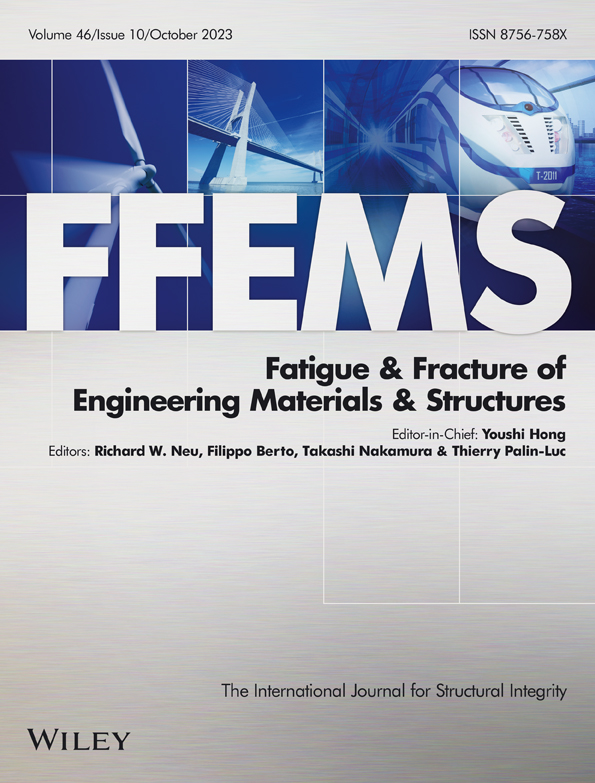The theory of critical distances for random vibration fatigue life analysis of notched specimens
Abstract
In this paper, the Theory of Critical Distances (TCD) is reformulated to be employed to estimate random vibration fatigue lifetime of notched components. Using the Point Method argument, the response stress at the critical distance from the notch root is taken as the damage parameter and then used to perform the vibration fatigue life analysis in the presence of geometrical features. First, the finite element simulation is conducted to obtain the response Mises stress power spectrum at the critical distance under the load excitation being investigated. Subsequently, the probability density distribution of the stress amplitude at this position is calculated. Finally, fatigue lifetime is predicted via the parent material S–N curve. In order to check the accuracy of the proposed reformulation of the TCD, a series of random vibration fatigue results were generated by testing notched aluminum alloy specimens under load spectra covering the first-, second-, and third-order natural frequencies. The results from the vibration fatigue tests being performed are seen to be in sound agreement with the predicted lifetimes. This strongly support the idea that the TCD is successful also in predicting random vibration fatigue lifetime of notched components.
Highlights
- The Theory of Critical Distances (TCD) is reformulated for life prediction.
- The random vibration fatigue lifetime of notched components is estimated.
- The FEA is conducted to obtain the stress power spectrum under load excitation.
- The probability density distribution of the stress amplitude is calculated.
CONFLICT OF INTEREST STATEMENT
The authors declare that they have no known competing financial interests or personal relationships that could have appeared to influence the work reported in this paper.
Open Research
DATA AVAILABILITY STATEMENT
The data that support the findings of this study are available from the corresponding author upon reasonable request.




